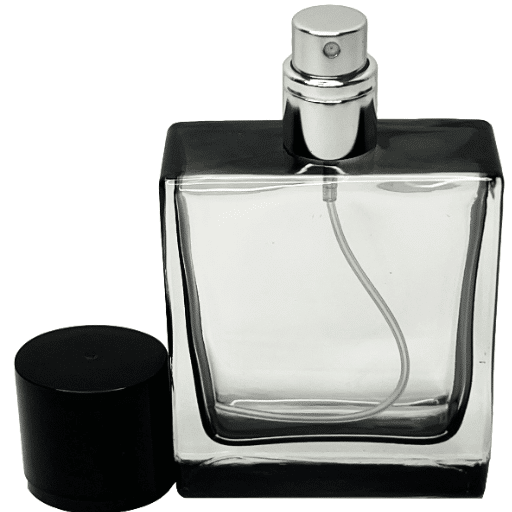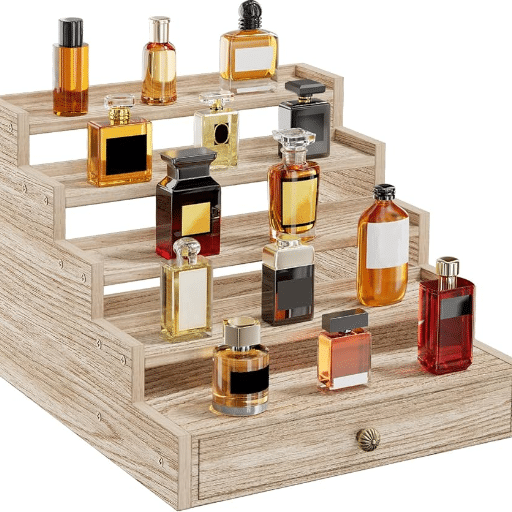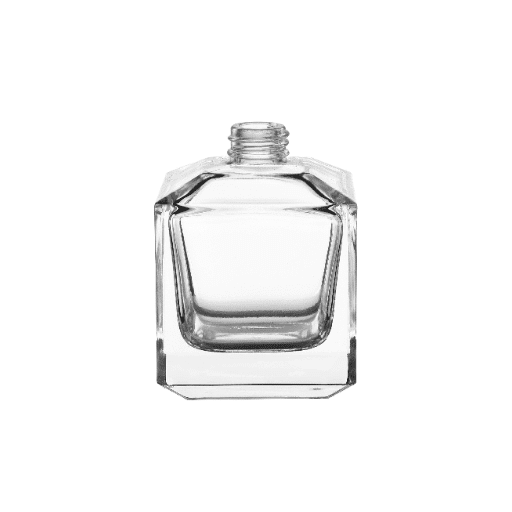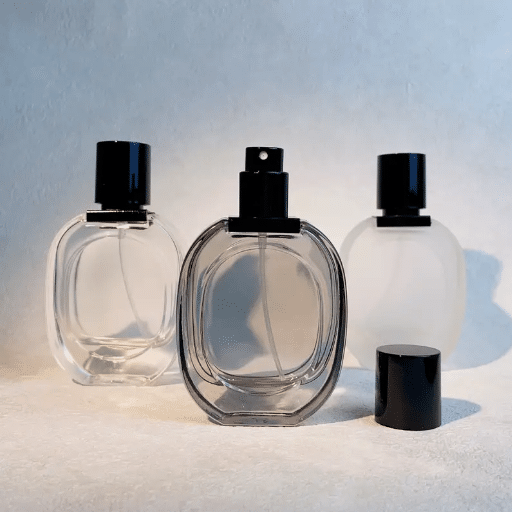Perfume bottles serve a purpose far above mere storage; they capture decades of rich artistry and reflect the fragrance within. From elegant crystal atomizers to modern silhouettes, each oriental perfume bottle embodies a chapter in history and offers an exceptional visual experience that transcends scent. This post will take you on a fascinating journey through the rich history of perfume bottles, their styles, shapes, and designs that have captivated collectors and scent lovers. Whether you’re looking to learn about some iconic designs or distinguish between various bottles and their features, this guide will shed light on the artistry and practicality of these beautiful containers. Get ready to savor the beauty of perfume bottles and their unique characteristics.
What are the Classic Types of Perfume Bottles Throughout History?
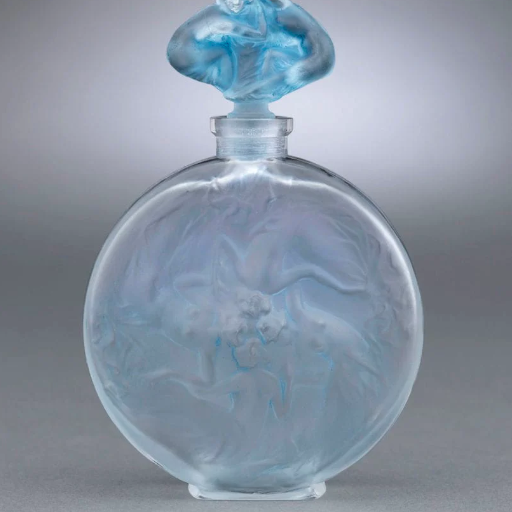
Perfume bottles have transformed with time, reflecting society’s artistic and functional needs. Some of the classic examples include:
- Antique Glass Bottles: Perfume bottles were quite popular in the 18th and 19th centuries. The bottles had exquisite hand-blown designs, showcasing the creativity and craftsmanship of the era.
- Crystal Bottles: These were introduced in the early 20th century and are known for their lavish finishes and elegant detailing.
- Art Deco Bottles: These bottles were popular from the 1920s to the 1930s. They had a distinctive look, with geometric shapes and bold lines.
- Miniature Bottles: These bottles gained popularity during the mid-20th century. They were convenient for samples or travel, emphasizing practicality and style.
- Modern Designer Bottles: Combining new materials and striking designs, Contemporary bottles are now a statement for modern branding and creative outlook.
All types of perfume bottles mark their historical influences and culture, transforming them into precious treasures in perfumery.
Evolution of Perfume Bottles: From Ancient Flacons to Modern Designs
Civilizations’ craft, culture, and technological evolution have bequeathed a fascinating history of perfume bottles. Ancient flacons made from alabaster, ceramic, and glass were carefully crafted to store oils and exotic fragrances. For example, Egyptian artisans would create elaborate perfume vases with motifs depicting the deities and nature. The significance of scent in their culture was spiritual. The art of bottle making later spread to Mesopotamia and Greece with new shapes and materials, including blown glass, during the Roman period.
In Europe during the 18th century, perfume bottles became emblematic of luxury. Their form became even more extravagant with decoration. Bohemian and French glassmakers employed enamel painting and gilding techniques to enrich their designs. The 20th century’s shift was even more radical from the 19th—renowned brands began partnering with artist-designers, producing prized bottles like Lalique and Baccarat. Lalique’s lightweight crystal designs of Art Nouveau were some of the most sought-after collector’s items.
Today’s modern perfume bottles are striking while also being multifunctional and sustainable. Many brands now use recycled materials and incorporate refillable features, which aid in aligning with the brand’s eco-conscious consumer base. Industry reports state that the global fragrance packaging market was around 10 billion in 2022, and due to evolving technology and consumer demand for more personalized designs, it will grow immensely in the upcoming years. Other emerging trends include innovative packaging that integrates digital tags or apps to relay information about the fragrance, blending innovation and tradition.
Perfume bottles now serve as identity, culture, and artistic expression rather than simply containers. They continue to adapt to the times, embodying each era’s technological advancements and aesthetic appreciation, ensuring their existence as functional items and artistic creations.
Art Nouveau and Art Deco Bottles: The Historical Significance in Perfumery
The fragrances of the late 19th and early 20th centuries are embodied in Art Nouveau and Art Deco perfume bottles characterized by the artistic movements during this period. Art Nouveau, flourishing from the 1890s to early 1910s, focused on more natural and curvilinear forms, including floral foliage and vine motifs. During that period, perfume bottles were marked with skilled craftsmanship and richly decorated with glass, enamel, and other materials. An exceptional leader in this field, René Lalique transformed perfume bottles into pieces of art, something to use as decoration through a wonderful marriage of craftsmanship and utility. He produced stunning glassworks featuring exquisite representations of nature with luxurious frills.
In stark comparison, the 1920s and 1930s marked the emergence of the Art Deco period, which was classified as bold and strong shapes infused with modern styles and geometric patterns. Industrial changes during this time contributed to the development of clean, smooth, and centered designs, often used with crystal, metal, or lacquer. The Dior house was advertised through Baccarat and other designers who created sleek and astonishing perfume bottles that showcased boldness and elegance. During this period, perfume bottles became symbols of luxury and innovation rather than focusing on the liquid inside the bottle.
The impact of these artistic periods is apparent in contemporary perfume design. Aficionados and art collectors consider Art Nouveau and Art Deco bottles as priceless treasures, and auction values for some of them ascend into the ranges of thousands, even tens of thousands, of dollars. For instance, boutique auction websites shared that select Lalique and Baccarat bottles from the early 20th century sold for as much as $30,000 recently. These bottles continue to serve as emblems of ingenuity and cultural identity and richly illustrate the fusion of art and daily living on which modern perfume design is based.
Vintage Perfume Bottles: How Craftsmanship Defined an Era
The exquisite detail in the vintage perfume bottles captures the apex of the artistry and innovation from that specific period. Starting in the late 19th and early 20th century, some famous glassmakers like René Lalique, Baccarat, and Cristalleries de Saint-Louis began working with significant perfume companies, designing bottles that matched the opulence of the scents inside. These wonders featured lavishly complex designs and craftsmanship, such as hand-etched surfaces, logos, delicate glass flowers, and filigree caps.
René Lalique was a significant figure in this change. His works for brands like Coty’s “perfume” packaging into an aesthetic touch. One of his famous works, the “Dans la Nuit” bottle for Worth, was decorated with star motifs that symbolized romanticism and escapism; both were core associative values to the perfumes of those times. Today, such bottles fetch over $10,000 at auctions, a testament to their unrelenting charm.
As industry estimates highlight, there is a growing interest in collecting vintage perfume bottles. The value of only Art Deco bottles is expected to increase by approximately six percent annually over the next decade. This surge can be attributed to the global interest in rare luxury finesse collectibles. This increase also proves the timeless appeal of these works of art, showcasing the creativity of bygone eras and strongly influencing contemporary design in the fragrance industry.
Vintage perfume bottles are no longer straightforward containers—they bestow unrivaled craftsmanship and impeccable artistic skill into exquisite pieces of art that transcend epochs.
How Do Different Perfume Bottle Designs Impact the Fragrance Experience?
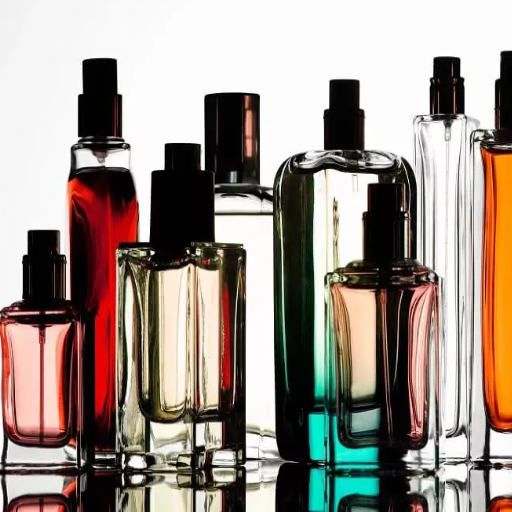
The design of perfume bottles can significantly impact the fragrance experience through scent and perception. Evoking certain feelings and relief while portraying the fragrance through carefully crafted stories is an astounding impact of fragrance bottles. For instance, minimalist design suggests clean and fresh scents, while ornate designs lean more towards complex aromas. Furthermore, functionality adds to the user’s experience by increasing ease when spraying and applying. A lovingly crafted bottle contains the fragrance and enhances it into a firesake for the senses.
Glass Perfume Bottles: Why Crystal and Clear Glass Enhance Allure
Reflecting Purity through Transparency
Crystal and clear glass bottles have also transcended elegance with perfume bottles. Luxury brands use these materials for luxury appeal and to showcase the fragrance inside. Transparent and crystal glass indicates accuracy and credibility, giving consumers looking for premium products a sense of trust.
Craftsmanship and Durability
Crystal glass is prized for its brilliance and the way it reflects light, creating a near-gem-like effect. It is commonly used in high-end perfume bottles. This material is typically molded, which instantly elevates its worth and grace. Moreover, although quite common, clear glass is celebrated for its versatility and immense strength. It is suitable for everyday and luxury fragrances. According to a recent study, the supply of high-end glass products has vastly increased due to aesthetics and sustainable features prominent in the modern world.
Sustainability and Modern Preferences
Many brands now opt for explicit and crystal glass materials as they are more environmentally friendly. With the growing awareness around a brand’s social responsibility, these glasses will enhance the appeal of the fragrance while attracting the modern shopper. Trends indicate an overall shift to more eco-friendly practices when it comes to packaging. Glass bottles are preferred by brands and consumers alike since they can be reused and recycled countless times without diminishing in quality.
The Role of Bottle Design in the Overall Experience of a Perfume
A perfume isn’t just a fragrance contained in a sophisticated bottle. A thoughtfully designed package evokes an experience, engaging the consumer’s senses. A study conducted in the cosmetics industry highlights that 70 percent of fragrance sales stem from the design of the package. In well-thought-out designs, packaging evokes emotions and visually draws attention. Sculptural and intricate bottles painted in vibrant hues attract buyers, as seen, for example, in artistic scene-collectible perfume bottles.
Through the use of frosted glass and metals, sophistication is perceived. Modern buyers value simplicity and elegance, and these aspects appeal to them. A perfume bottle conveys the brand and the perfume’s character: bold, romantic, or fresh. Eco-friendly design elements such as refillable bottles and biodegradable materials enhance loyalty, appreciation, and consumer praise for brands that focus on sustainable practices. Eco-conscious consumers are the driving factor. These strategic choices in bottle design accentuate how integral the shape of a bottle is to a perfume.
How Bottle Design Can Encapsulate the Essence of the Scent
The perfume bottle’s design is a replica storyteller, visually describing the scent. Research states that approximately 75 % of consumers are influenced by the packaging design of a fragrance and make purchases based on it. For instance, luxurious, opulent materials like crystal or metal depict luxury, while minimalist modernity is shown through modern, frosted glass bottles.
The emotional bonds created to fragrances are also depicted through the bottle shape. Curvilinear shapes might communicate wild sensuality, while geometric or angular designs evoke bold edginess. 3D-printed concept designs have recently emerged, allowing more creativity in narrative reflection. Eco-friendly designs that embody lightweight to carbon-reducing materials for packaging and recyclable limits also arose from increased sustainable practice demands.
From this, it can be concluded that strategies combine scientific research about society’s preferences with the art style of the scent in question to create the science of bottle design. Every bottle’s color, shape, and texture dramatically influence a person’s perception of the fragrance before opening, giving meaning to the importance of bottle design in perfume.
What Are the Most Common Types of Perfume Bottle Dispensing Systems?
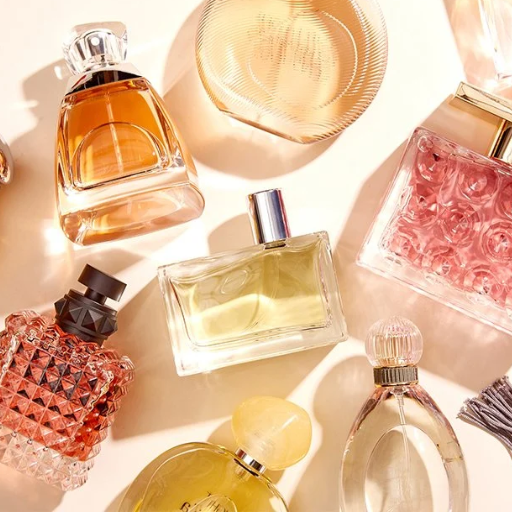
The dispensing systems of perfume bottles mainly fall under three categories:
- Spray Atomizers provide a light mist that assists with even perfume application. They are the most common dispensing system and accurately measure the amount of perfume used. This system also helps reduce wastage.
- Rollerballs – These are common for travel-sized perfumes as they permit easy application and accurate targeting of pulse points.
- Splash Bottles—The user must dab or pour the fragrance himself/herself. This dispensing system is uncommon but retains a following for classic/vintage-themed perfumes.
Atomizers vs. Stoppers: Different Ways to Apply Your Fragrance
With stoppers and atomizers, each style of your favorite fragrance has benefits. Below is a guide that aims to clarify the advanced differences between methodologies:
- Atomizers
-
-
- An atomizer is designed to ensure an even fragrance application; therefore, it is applied lightweight.
- They are convenient when fragranced in a large area since less effort and time are required, which is ideal for everyday use.
- With atomizers, the customer can also control the amount of fragrance used. The fine mist delivered allows the right amount of perfume to be applied each time, so there will be no wastage.
- Best suited to modern perfumes intended to be spread across a wide area.
- It’s held securely to prevent spills, making it ideal to be carried in a bag.
-
- Stoppers
-
-
- Stoppers are seen as an older method of applying fragrance, commonly found on vintage or expensive perfume bottles.
- With a stopper, users dab the fragrance themselves on pulse points, leading to precise applications.
- Typically, these are used for richer or more concentrated fragrances, as a small amount goes a long way.
- That method serves to add an elegant classic frame to the fragrance-wearing ritual.
- Typically seen supporting the aesthetic of decorating perfume bottles or collectible items.
-
While atomizers and stoppers may differ in aesthetics, they intend to provide unique experiences and cater to precise needs with a touch of sophisticated vintage charm.
Fine Mist Dispensers: Modern Perfume Bottle Technology
Fine mist dispensers mark another step in technology regarding perfume bottles and how users apply and experience fragrances. An essential feature of these dispensers is that they give out the fragrance in a light, gentle mist. Distributors use state-of-the-art engineering for nozzles, which lessens the output for users who appreciate standards and precision. Fine mist dispensers, on the other hand, take pride in the effortless consistency they guarantee.
Focusing on the recent innovations with fine mist sprayers involves miniaturizing the droplet size to about 40 to 60 microns. This ultra-fine mist not only helps in evaporation on the skin but also helps the fragrance last longer as it adheres to the application surface more effectively. Additionally, many fine mist dispensers are manufactured from more sustainable materials like recyclable plastics and glass, helping address some critical issues in the perfume industry.
Moreover, designers and engineers are developing more advanced sealing features that help prevent leakage of the defined perfume and protect against air exposure, which can spoil the quality of the perfume. Nowadays, some units integrate refillable features because of the growing need for eco-friendly and economical options. Fine mist dispensers are one of the most significant advancements in perfume packaging as they incorporate precision technology with ease and sustainability.
Vials and Rollerballs: Portable Perfume Packaging Options
Vials and rollerball applicators have become recognized as standard choices for perfume packaging due to their exceptional portability and convenience. Labeled as vials, these small glass containers are perfect for sampling and traveling as they hold just the right amount of product without taking up too much space. Rollerball applicators are great for controlled application because they dispense liquid through a rolling mechanism, making them ideal for precision without wasting product.
Tiny, travel-sized vials and rollerball fragrances are gaining popularity; recently, many consumers have shown interest in them. This 2023 market analysis indicates that portable packaging, consisting of vials and rollerballs, is becoming an essential part of the global perfume packaging market due to the growing consumer need for convenience. In addition, several brands are now using sustainable materials to manufacture their vials and rollerballs, such as recyclable glass and environmentally safe lids, to keep up with the demand for eco-friendly products.
With these changes, perfume lovers can conveniently carry their products everywhere while actively working towards reducing their carbon footprint—this solidifies portable packaging as an innovative solution for fragrance aficionados.
Which Luxury and Designer Perfume Bottle Types Are Most Recognizable?
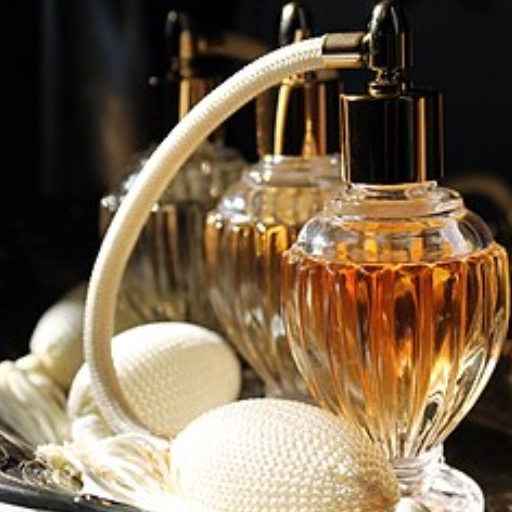
Luxury and designer brands usually have very distinguishing traits, such as the marked branding shapes and the type of packaging used for each product.
- Chanel No. 5—The sleek and elegant rectangular face bottle, with smooth edges and a modest label, conveys a mark of style and timelessness.
- Dior J’adore – It’s a recognizable amphora-shaped bottle with a golden neck designed to strike sophistication and luxury.
- Marc Jacobs Daisy—Its playful look, combined with the comical flower on the cap, makes it a centerpiece on any dresser.
- Yves Saint Laurent Black Opium – The bottle’s dark, glittery outer design with a round clear window at the center is bold and enigmatic.
- Gucci Bloom—This soft blush pink rectangular bottle with a floral vintage sticker on its body is warm and gentle.
These designs are admired not only for their attractiveness but also for the instant recognition of the brand that accompanies them.
Iconic Chanel Perfume Bottles: Elegance and Sophistication
When I think of Chanel perfume bottles, the first thing that comes to mind is their timeless beauty combined with minimalist sophistication. Detaching the oval cap from the body, the scent flows out as if it were gushing down a waterfall. The elegance captured in its shape, along with the Chanel logo, ironically makes it both luxurious and affordable.
Crystal Perfume Bottles: The Artistry Behind Luxury Fragrances
Crystal perfume bottles are far more than just containers; they represent an exquisite art form in design and craftsmanship that transforms luxury fragrances into art. Popular perfume brands join forces with crystal houses like Baccarat and Lalique to produce exquisite bottles that are as valuable as their contents. For instance, Baccarat has partnered with Dior and Guerlain, molding beautifully adorned bottles using time-honored techniques. These bottles are frequently crafted from hand-blown glass, intricately every, and painstakingly engraved with the utmost accuracy down to the finest detail.
Crystal luxury perfume bottles are usually issued in limited quantities and are highly sought after. A few may feature some decoration, such as gold outlines, precious stones, or even painted details that blend sophistication and rarity. A stunning representation of these is also a Lalique crystal bottle created for Nina Ricci’s L’Air du Temps perfume, which features skirted nearly nights with fragile doves that embody tranquility and amour.
The market value of these artisanal creations is self-evident. Based on their intricacy and rarity, the price of limited-edition crystal perfume bottles may range from a few hundred to several thousand dollars. Collectors and industry analysts agree that the allure of functional art is increasingly capturing consumers’ attention, which crystal perfume bottles epitomize as luxurious markers of contemporary living. This effortless mingling of scent and design transcends the ownership experience of a high-end fragrance to an utterly different dimension.
Unique Bottle Designs That Have Revolutionized Perfumery
Alongside the fragrances they hold, the perfume industry has unrivaled timeless perfume bottle designs. A famous one is Chanel No. 5, a minimalist rectangular shape introduced in 1921. It represents modernity and timeless elegance. The design revolutionized the perfumery aesthetic while introducing simplicity as a luxury signature.
The Christian Dior J’adore bottle is equally iconic in transformative bottle designs. The curvaceous feminine silhouette is topped with a necklace-like neck in gold, an actual piece of jewelry, parting Dior’s vision from perfume to couture design. This design made a deeply rooted mark in the history of modern design as it strengthened the link between perfume and haute couture.
An example of innovation is Marc Jacobs’ Daisy, a cherubic design featuring playful, blossom-shaped adornments of myriad colors decorating the cap. This bottle highlights the growing shift toward designs that appeal to younger consumers, combining delicate whimsy and modern flair.
Furthermore, eco-friendly technological advancements and the sustainability boom have led to designs such as refillable bottles from companies like Mugler. For example, star-shaped and gem-like bottles from the brand’s Angel and Alien lines marry elegance with an eco-conscious design that minimizes waste.
Aside from the visual appeal, these designs capture a more excellent shifting value within consumer and industry standards. The meticulous artistry, engrained cultural heritage, and innovative green thinking guarantee that perfume bottle designs will transform as rapidly as scents are created.
What Are the Emerging Trends in Eco-Friendly Perfume Packaging?
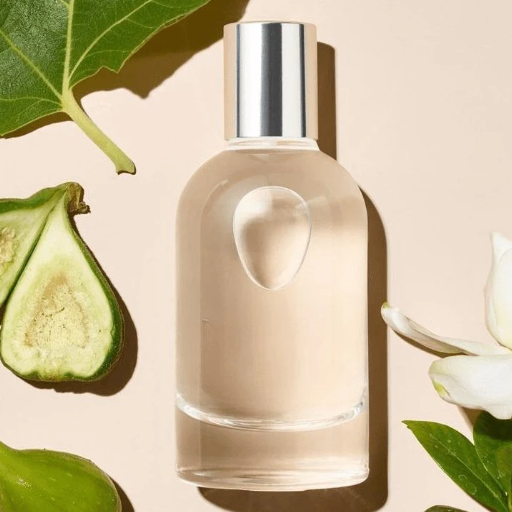
- Recyclable Materials—Several companies now use glass, aluminum, and paper as fully recyclable packaging materials to reduce their environmental footprint.
- Refillable Packaging—Perfume refillable containers are becoming increasingly common. They can be stored in waste-reducing refillable containers that can be used multiple times.
- Biodegradable Components—Certain firms are developing biodegradable caps, labels, and external packaging to guarantee sustainability throughout the product’s lifecycle.
- Minimalist Design—Omitting superfluous features from product packaging is a positive ecological step, reducing the use of plastics and other excess materials while maintaining functionality.
- Use of Recycled Content—Perfume packaging is often more sustainable when it uses plastic that consumers have used and discarded.
These changes demonstrate growing corporate environmental awareness and responsibility accompanying consumer appetite for sustainable products.
Sustainable Materials in Modern Perfume Bottles
The move towards sustainability in perfume packaging has resulted in the adoption of modern, eco-friendly materials for constructing perfume bottles. While glass is still widely used due to its high recycling value—about 80% is convertible to new production glass—it reduces waste and natural resources. Many fragrance houses now use lightweight glass, which is more economical.
In a bid to combat climate change, the emission of greenhouse gasses, such as bio-based plastics, can lower greenhouse emissions by fifteen percent. Also, these are created from renewable resources, such as corn or sugarcane, reducing the carbon footprint significantly. Moreover, it acts as an alternative to petroleum-based plastics.
Decorative parts and furniture caps are manufactured using light alloy, which can be recycled endlessly. Aluminum’s recyclable attributes prompt the use of aluminum in these decorative parts and furniture caps. Additionally, cork can be used to accent caps or other parts as it is biodegradable and renewable, making the design aesthetic sustainable.
Where there is hope, there is a vision. The perfume industry had a vision of utilizing sustainable raw materials that are eco-friendly in construction while reducing its wastefully elegant designs. These aids to the perfume industry’s hostile impact on the environment over time. Switching to renewable and recyclable materials improves the fragile state of luxury packaging.
Refillable Perfume Bottles: Combining Luxury with Environmental Consciousness
Reusable perfume containers merge elegance in aid to the environment and bring innovation to the high-end fragrance market. This change addresses one of the most significant problems in causing international pollution: non-use packaging waste. With fragrance brands moving to refillable designs, people can refill their scent without tossing the bottles, reducing the use of glass and plastic.
Changing to reusable bottles can significantly reduce packaging waste in the beauty sector, notorious for its yearly waste of 120 billion units. Leading brands now offer elegant refill stations in-store or provide refill cartridges to ensure that luxury and convenience remain uncompromised. In addition, using high-quality, durable materials for these constructions reinforces the premium aesthetic consumers seek while ensuring brand longevity.
The filled bottle trend reflects a shift toward consuming sustainable luxury and has already been demonstrated as commercially feasible by numerous fragrance houses reporting an increase in loyal clientele. From a consumer standpoint, refillable cartridges hit the sweet spot as they address utility while minimizing eco-guilt and visibly contribute to environmental impact. Refillable perfume initiatives represent a vital step toward a more responsible future in the beauty industry.
Reference Sources
- “Luxury Packaging Design Trends in the Fragrance Industry” (2021)
-
-
- Summary: This study explores the design elements that categorize high-end perfume bottles, often called “flacons,” and their influence on consumer behavior. Analyzing visual appeal, materials, and cultural significance highlights how intricate designs enhance brand value. The methodology involved market analysis and consumer surveys across multiple regions.
- Key Findings: The research affirmed that consumers associate unique bottle shapes and materials like crystal or glass with luxury and exclusivity. Sustainability was also identified as an emerging preference.
-
- “Sustainability in Luxury Packaging for Fragrances” (2020)
-
-
- Summary: Focusing on recent innovations, this paper examines how luxury perfume brands incorporate eco-friendly materials into their bottle designs. Interviews with industry professionals and case studies on top brands such as Chanel and Dior form the foundation of the research.
- Key Findings: The study revealed an industry-wide push toward refillable and recyclable bottle options, alongside maintaining elegant aesthetics that align with brand identity.
-
- “The Art of Perfume Bottle Craftsmanship: Balancing Tradition and Modernity” (2022)
-
-
- Summary: This paper investigates the artistic craftsmanship of perfume bottles, including the balance between traditional designs and contemporary minimalism. The methodology includes interviews with artisans and an analysis of museum collections.
- Key Findings: Results underline the importance of handcrafted details and innovative techniques to preserve luxury appeal, emphasizing storytelling through design.
-
- “Consumer Perception of Refillable Perfume Packaging” (2023)
-
-
- Summary: This study addresses the growing trend of refillable bottles and their acceptance among luxury perfume consumers. It employs consumer surveys and experimental setups to gauge perceptions of sustainability versus opulence.
- Key Findings: Most participants regarded refillable bottles as a noble effort, provided the aesthetic and tactile appeal remains uncompromised.
-
Frequently Asked Questions (FAQs)
Q: What are the different types of glass bottles used for perfumes?
A: Perfume glass bottles come in several varieties, including atomizers (which release a fine mist of fragrance when squeezed), flacons (decorative bottles, as “flacon” is the French word for bottle), decanters (typically larger vessels for storing perfume), rollerball bottles (featuring a ball applicator), splash bottles (without spray mechanisms), and miniatures (small sample-sized bottles). These bottles are designed not only to store the fragrance but also to enhance the overall aesthetic appeal of the product, often featuring elaborate designs and coming in various colors and shapes reflecting the essence of the fragrance inside.
Q: What is a flacon, and why is it essential in perfume packaging?
A: A flacon typically refers to a decorative perfume bottle, derived from the French word for bottle. Historically, flacons have been crafted from glass and feature elaborate designs, often adorned with intricate details that complement their fragrance. The importance of a flacon extends beyond mere storage—it’s an essential element in the perfume experience, enhancing the overall sensory journey and reflecting the essence of the fragrance. A beautifully designed flacon contributes to the luxury appeal of perfumes and can even become a collectible item, standing the test of time even after the perfume is used.
Q: How were perfume bottles used to store essential oil throughout history?
A: Throughout history, vessels for storing essential oil evolved from practical containers to artistic statements. Ancient Egyptians used alabaster and glass jars to preserve precious scented oils. Romans favored small glass bottles called unguentaria. In the Islamic Golden Age, intricate glass and metal containers preserved rose and jasmine oils. By the early 20th century, as perfumery became industrialized, specialized bottles were designed specifically for essential oils, with dark glass protecting the contents from light degradation and narrow necks that allowed for controlled dispensing. These containers were crucial for maintaining the potency and integrity of the essential oils across different civilizations.
Q: What was the evolution of perfume bottles from ancient times to the early 20th century?
A: The evolution of perfume bottles dates back to ancient Egypt and Mesopotamia, where scented oils were stored in alabaster, pottery, and early glass vessels. Greeks and Romans advanced glassmaking techniques, creating more refined containers. During the Middle Ages, simple glass bottles prevailed, while the Renaissance brought ornate designs. The 18th century saw the rise of crystal and porcelain bottles. The 19th-century Industrial Revolution enabled the mass production of glass products. By the early 20th century, perfume bottles became artistic statements, with designers like Lalique creating bottles as valuable as the fragrances themselves. This era began the modern relationship between perfume and packaging design, where bottles became integral to brand identity.
Q: What makes a decanter different from other types of perfume bottles?
A: A decanter is distinguished from other perfume bottles by its typically more significant size and specific design for decanting (transferring) fragrances from larger containers into smaller ones for daily use. Unlike standard perfume bottles called atomizers that release a fine mist, decanters usually have a stopper or cap rather than a spray mechanism. Traditionally crafted from high-quality glass or crystal with elegant, elaborate designs, decanters serve both functional and decorative purposes. They’re often used for storing precious perfume oils or custom-blended fragrances, providing an air of luxury and sophistication while preserving the essence of the fragrance over time.
Q: How do glass bottles preserve the integrity of perfume oils?
A: Glass bottles are ideal for preserving perfume oils because glass is non-reactive, preventing unwanted chemical interactions that could alter the perfume oil composition. The impermeable nature of glass prevents evaporation and oxidation, maintaining the essence of the fragrance. Dark-colored glass (amber or cobalt) protects photosensitive ingredients from UV degradation. Glass is also temperature-stable, preventing heat-related breakdown of fragrance molecules. Unlike plastic, glass doesn’t leach chemicals or absorb scents. Premium glass jars with airtight seals ensure maximum preservation of volatile aromatic compounds. This is why, historically and currently, companies like Daxin and other glass products co-manufacturers specialize in glass perfume containers that have stood the test of time as the industry standard for quality fragrance preservation.
Q: What innovations in glass bottle design have enhanced the experience of using perfumes?
A: Innovations in glass bottle design have revolutionized the perfume experience through several advancements. Precision atomizers that release a fine mist of fragrance ensure optimal application. Ergonomic shapes have improved handling and application. Temperature-responsive glass reveals hidden patterns or colors when touched, adding an interactive element. Sustainable designs using recycled glass and refillable systems have reduced environmental impact. Innovative dispensing systems control the amount of perfume released, preventing waste. Customizable bottles allow for personalization. Textured surfaces enhance grip and sensory appeal. LED-integrated bottles illuminate the fragrance. Airless pumps preserve perfume quality by preventing oxidation. These innovations combine functionality with aesthetic appeal, improving the practical experience and the emotional connection to fragrances.
Q: What are the most collectible types of vintage perfume bottles, and what are their characteristics?
A: The most collectible vintage perfume bottles include Art Nouveau pieces (1890-1910) featuring organic forms and nature-inspired designs; Art Deco bottles (1920s-1930s) with geometric patterns and bold colors; Lalique crystal creations known for their exceptional craftsmanship; Baccarat crystal bottles prized for their brilliance; DeVilbiss atomizers with their distinctive spray mechanisms; Czech glass bottles with vibrant colors and detailed work; and limited edition bottles from iconic houses like Chanel and Guerlain. The most valuable pieces typically date from the early 20th century and exhibit characteristics like original stoppers, intact labels, rare designs, and signatures from renowned creators. These bottles are highly sought after for their ability to captivate collectors through their artistic merit and historical significance rather than just for the perfume they once contained.

